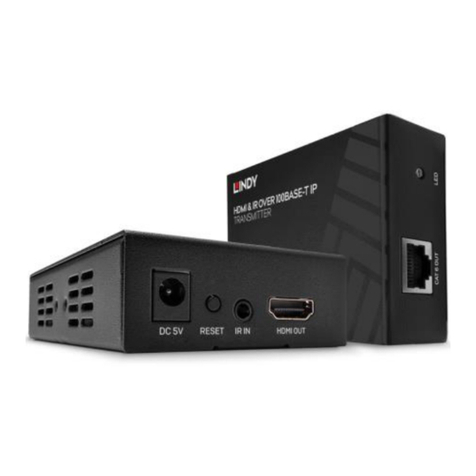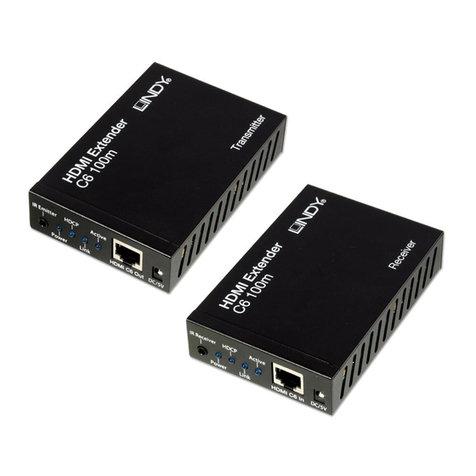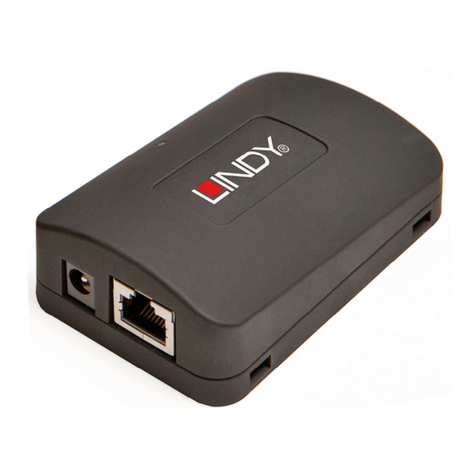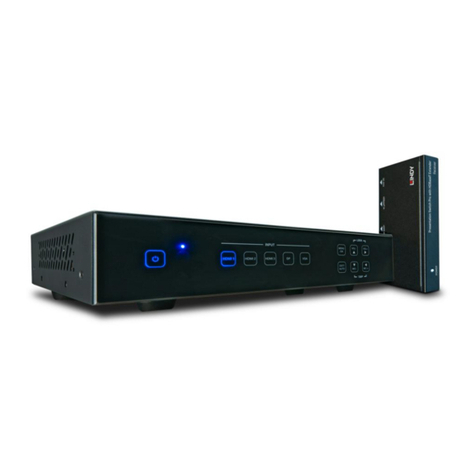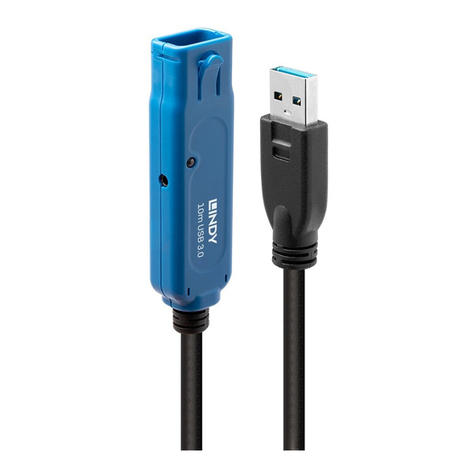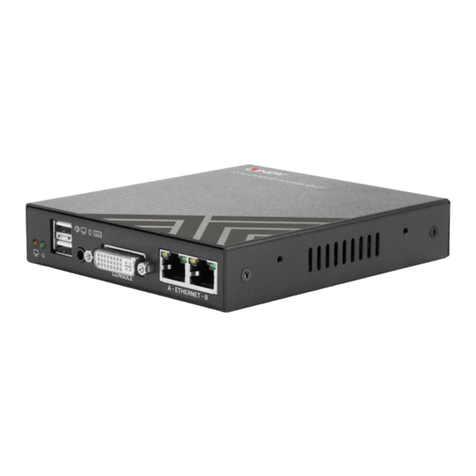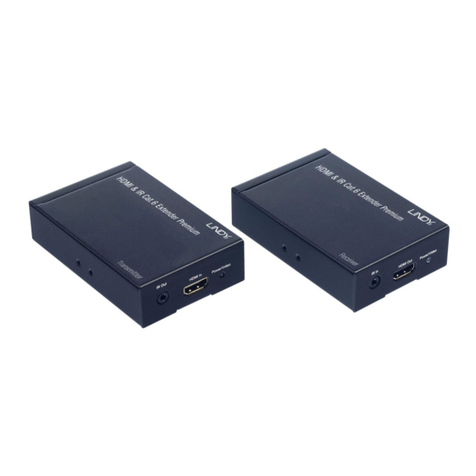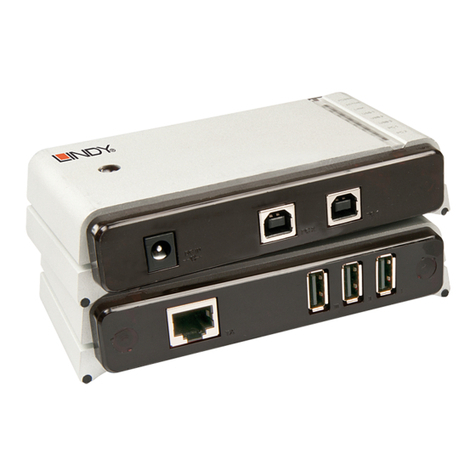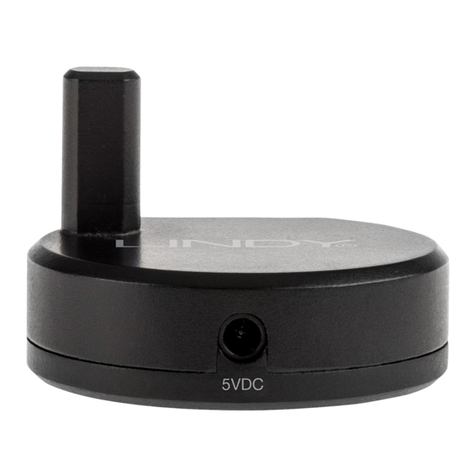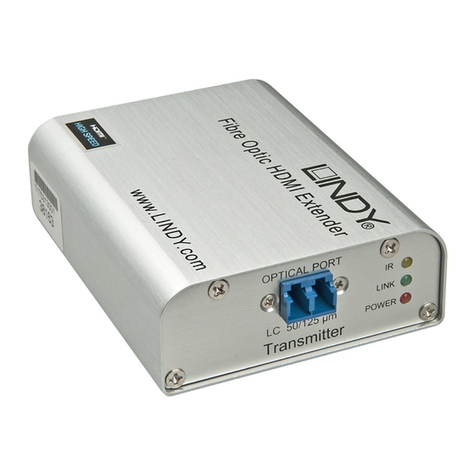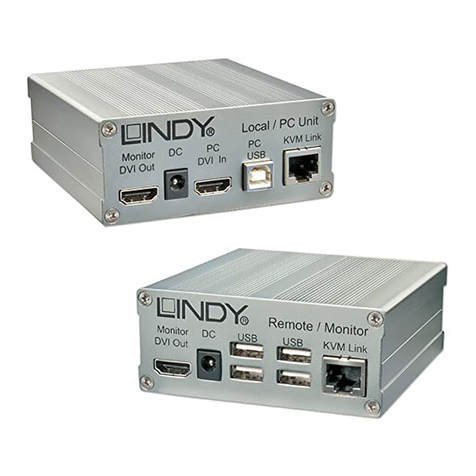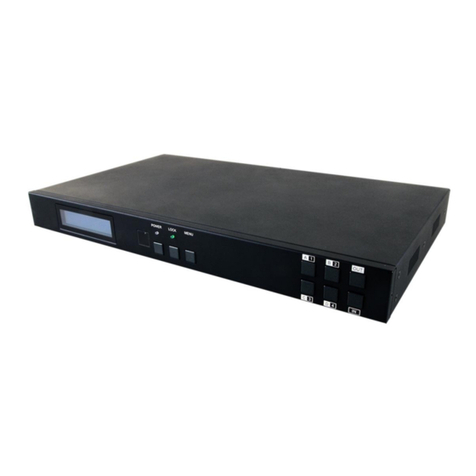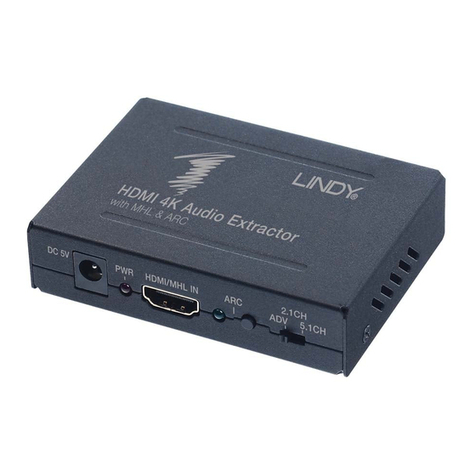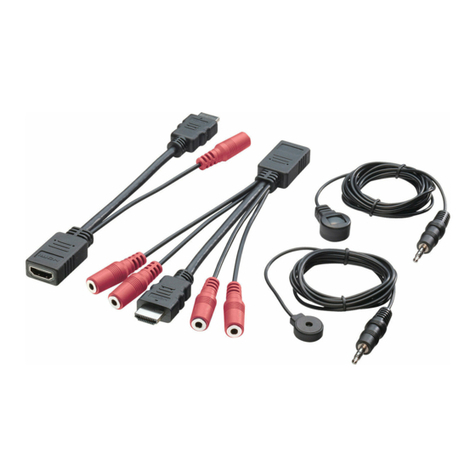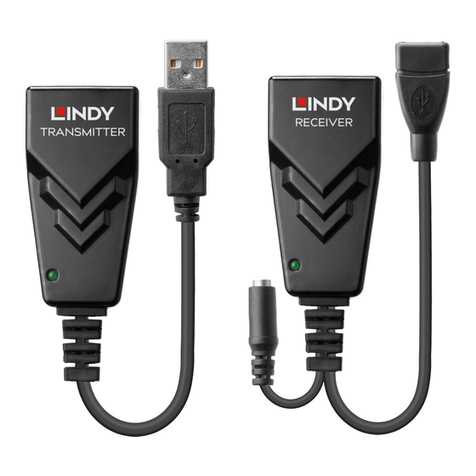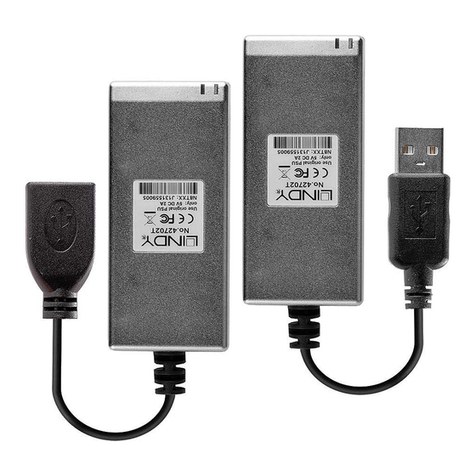
Benutzerhandbuch Deutsch
4
Funktion des IR Transmitterkabel
Wenn Ihre HDMI Signalquelle oder Ihr Anzeigegerät HDMI CEC nicht unterstützen, kann der
Receiver die Fernbedienungssignale der IR Fernbedienung der HDMI Signalquelle an den
Transmitter übertragen, welcher sie dann über das IR Transmitterkabel an Ihre HDMI
Signalquelle ausgibt. Dazu muss der IR Sensor des Receivers die Fernbedienungssignale
optisch aufnehmen können und das Transmitterkabel muss optisch vor dem IR Sensor der HDMI
Signalquelle platziert werden.
Fehlersuche
Bitte stellen Sie sicher, dass die POWER LEDs an Transmitter und Receiver leuchten
Andernfalls könnte ein Netzteil defekt sein, tauschen Sie in diesem Fall die Netzteile
untereinander aus um festzustellen, ob das Netzteil oder eines der Geräte defekt ist.
Die Wireless oder Video Link LED leuchtet nicht
1. Möglicherweise ist die Verbindung zu schwach, die Distanz zu groß, andere Funksignale
stören erheblich, sind zu viele Wände zwischen Transmitter und Receiver?
2. Stellen Sie Transmitter und Receiver in aufrechte Position und mit den flachen Seiten
zueinander zeigend auf. Schalten Sie beide Geräte einmal aus und wieder ein.
3. Vermindern Sie die Distanz zwischen Transmitter und Receiver und schalten Sie beide
Geräte einmal aus und wieder ein um dem Problem auf den Grund zu gehen. Stellen Sie die
Geräte notfalls im Abstand weniger Meter ohne störende Wände auf, nur um die generelle
Funktion zu verifizieren.
Der Bildschirm bleibt dunkel
1. Prüfen Sie alle Kabel auf korrekten Sitz und LEDs auf korrekte Statusanzeige
2. Möglicherweise liegt eine Inkompatibilität zwischen den Geräten vor. Wenn sie alle oben
genannten Maßnahmen durchgeführt haben, kontaktieren Sie bitte den LINDY Support und
berichten Sie genau den Status der LEDs und Ihrer Gerätekonfiguration
Das IR Transmitterkabel überträgt die Fernbedienungssignale nicht
1. Überprüfen Sie ob der IT Transmitter optisch vor dem Sensor der Signalquelle positioniert ist
2. Die Fernbedienung muss auf den IR Sensor am Receiver gerichtet werden
